
Thursday, December 14th, 2023
A Visit to Montmartre Cemetery
Cover image: Tomb of Alexandre Dumas (fils)
© Entrée to Black Paris
Having recently delved into the life story of Alexandre Dumas (fils), Tom and I set out for Montmartre Cemetery on a damp, chilly, and gray day to find the tomb of this well-known writer.
While there, we resolved to visit the tombs of two contemporary African American performers - Carole Denise Fredericks and Arthur Briggs - as well.
Montmartre Cemetery (aka the North Cemetery) is the third largest necropolis in Paris. Founded in 1825, it lies on 10.48 hectares (25.9 acres) of hilly terrain in the 18th arrondissement and is overlain in part by the Caulaincourt Bridge. It is accessible via avenue Rachel, which intersects boulevard de Clichy down the street to the west of the Moulin Rouge.
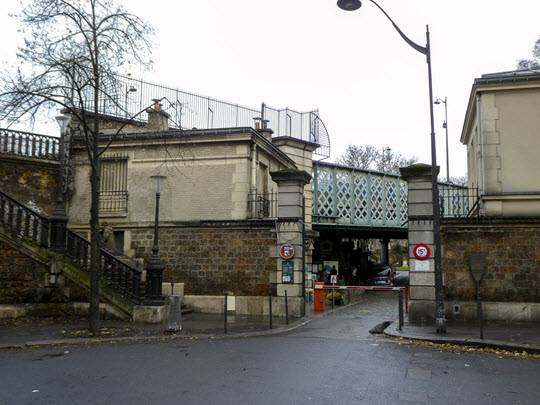 Cimetière Montmartre - entrance
Cimetière Montmartre - entrance
© Entrée to Black Paris
Almost immediately upon entering the cemetery, we encountered the tomb of the family of Sacha Guitry, the actor who served as French diction coach for Josephine Baker.
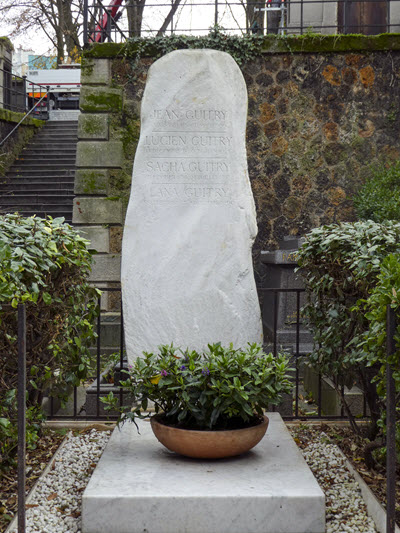 Guitry family tomb
Guitry family tomb
© Entrée to Black Paris
We immediately turned left onto Avenue Saint-Charles to go to Division 15, where we found the grave of Alphonsine Plessis. One of Dumas (fils)' mistresses, she is credited for being the inspiration for the protagonist in Dumas' Dame of the Camelias.
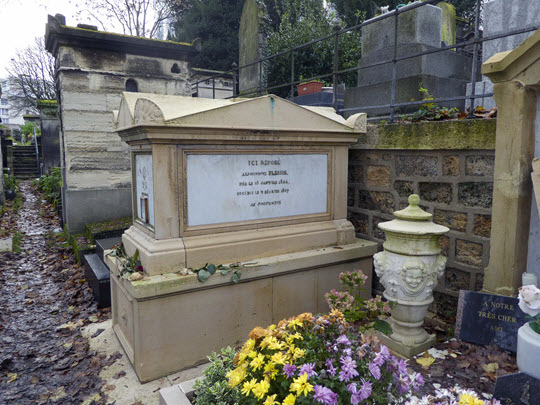 Alphonsine Plessis tomb
Alphonsine Plessis tomb
© Entrée to Black Paris
I was surprised to find that Plessis' tomb lies next to the final resting place of Jean-Claude Brialy, the actor and film producer who was deeply involved in Josephine Baker's career toward the end of her life.
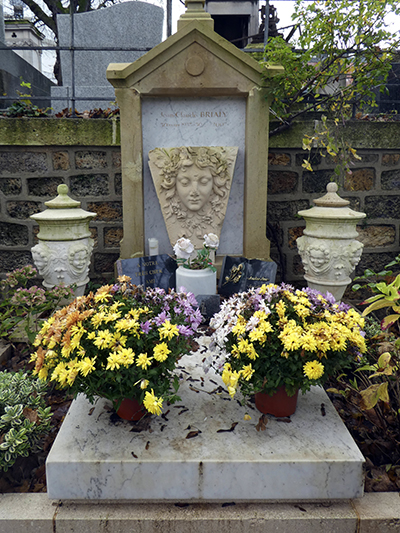 Jean-Claude Brialy tomb
Jean-Claude Brialy tomb
© Entrée to Black Paris
Retracing our steps to the Avenue Principale, we walked to the roundabout, called Carrefour de la Croix, to find our way to Dumas' grave. A bust of Emile Zola overlooks this circular road, from which two main roads extend.
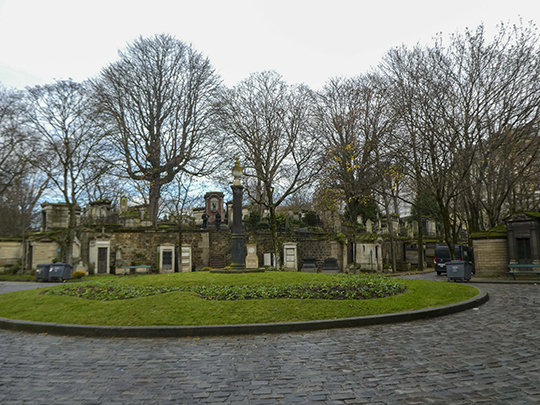 Carrefour de la Croix
Carrefour de la Croix
© Entrée to Black Paris
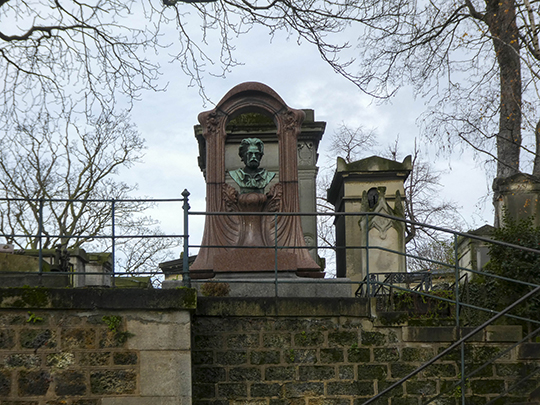
Emile Zola tomb
© Entrée to Black Paris
We chose to walk west on Avenue de la Croix and turn right on Avenue de Montmorency to find our way to Division 22, where Dumas was laid to rest in 1895. Few people know that his great-grandmother was an enslaved woman in Saint-Domingue (Haïti) and that his writing was just as well respected as that of his larger-than-life father.
The remains of Dumas fils' second wife, Henriette Escalier, also lie in this tomb.
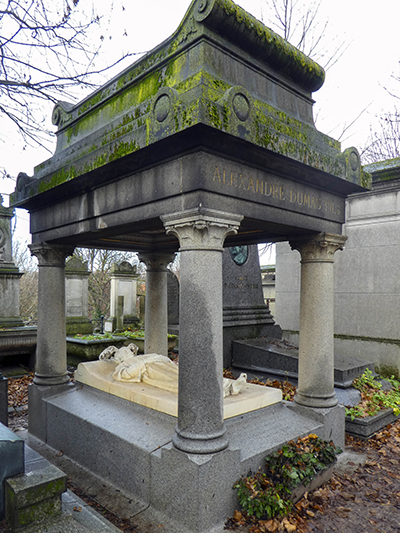 Alexandre Dumas (fils) tomb
Alexandre Dumas (fils) tomb
© Entrée to Black Paris
From Division 22, we stopped for a moment at the top of a steep flight of stairs to take in the view before descending to Avenue Cordier and heading toward Avenue des Carrières to find the grave of Carole D. Fredericks.
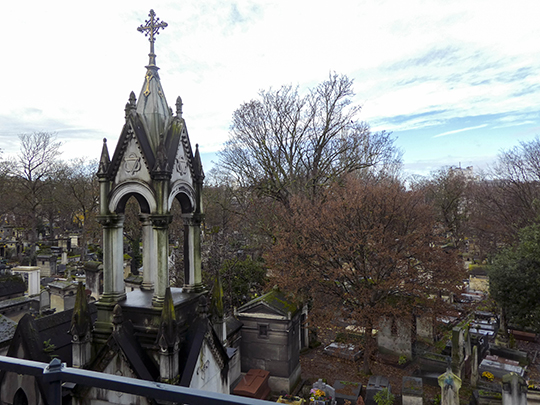 View from Division 22
View from Division 22
© Entrée to Black Paris
Along the way, we saw one of the most unusual tombs I've ever seen. It was entirely covered in colorful mosaic tiles that formed images and pronounced poetry. It belongs to a man named Joseph Ezri.
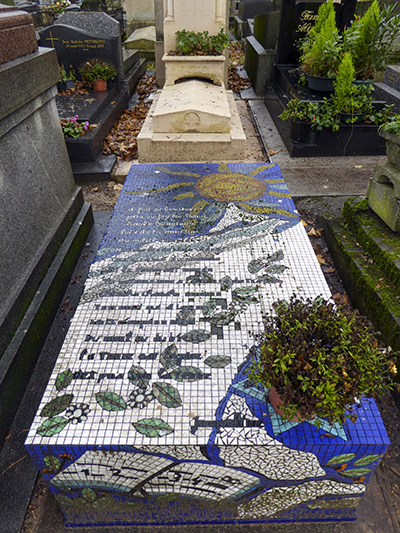
Joseph Ezri tomb
© Entrée to Black Paris
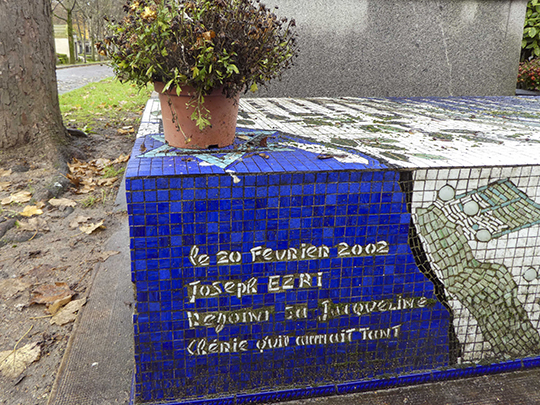
Joseph Ezri tomb - epitaph
© Entrée to Black Paris
Carole Fredericks' grave is next to the road, so there was no need to tread on a narrow path paved with soggy fallen leaves as we did when we approached Plessis' and Dumas' graves. We found a lovely red rose atop the beautiful stone.
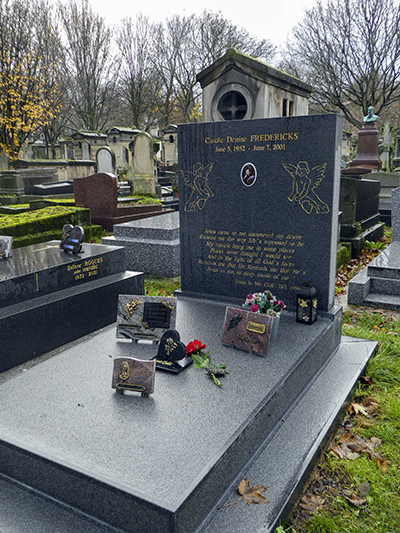 Carole D. Fredericks tomb
Carole D. Fredericks tomb
© Entrée to Black Paris
After paying our respects, we continued down Avenue des Carrières and turned left to walk along the border of Division 9 and look for Arthur Briggs' grave. We passed the grave of Jacques Offenbach, composer of La Créole, the operetta in which Josephine Baker performed in French for the first time.
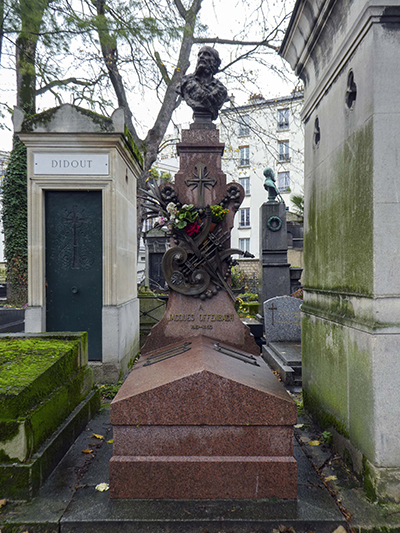 Jacques Offenbach tomb
Jacques Offenbach tomb
© Entrée to Black Paris
We finally found Briggs' grave near the intersection of Chemin Saint-Nicolas and Chemin Lepage.
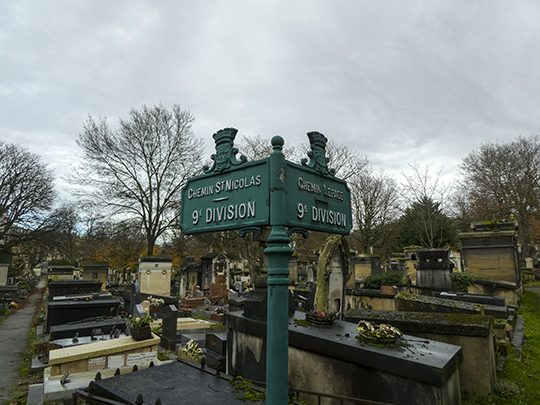
Division 9 intersection
© Entrée to Black Paris
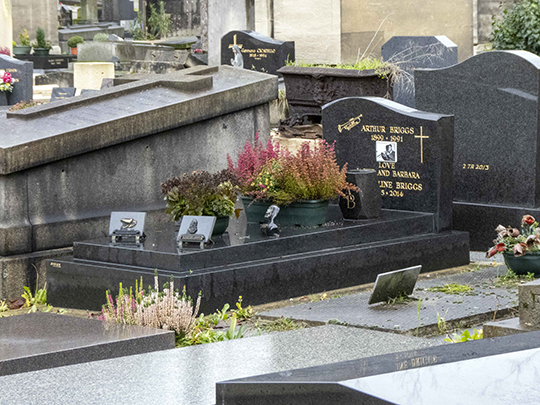 Arthur Briggs tomb
Arthur Briggs tomb
© Entrée to Black Paris
Upon reading the tombstone, we learned that Briggs' wife, Jacqueline, died in 2014 and was laid to rest with him.
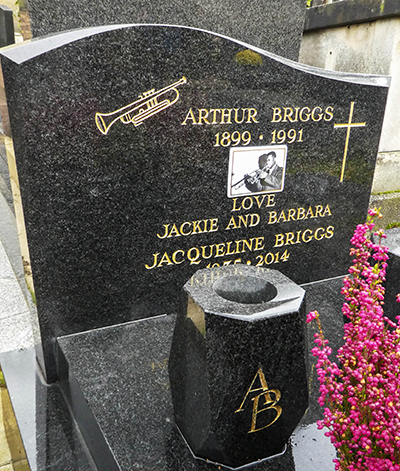 Close-up of Briggs tombstone
Close-up of Briggs tombstone
© Entrée to Black Paris
This was our final "stop" in the Cimetière du Nord. From the Briggs family tomb, we found our way back to Avenue Saint-Charles, took one final look at the Plessis and Brialy tombs, and left the cemetery.

 Our Walk: Black History in and around the Luxembourg Garden - Click here to book!
Our Walk: Black History in and around the Luxembourg Garden - Click here to book!